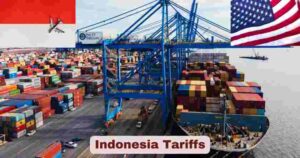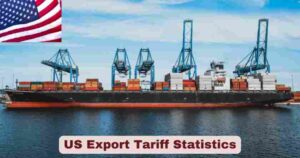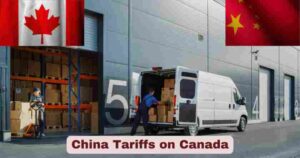Current Chinese Tariffs on American Goods in 2025
The escalating trade tensions between the United States and China have undergone dramatic fluctuations in 2025, with Chinese retaliatory tariffs on American goods experiencing unprecedented volatility following the historic May 12, 2025 Geneva Agreement and subsequent August 12 extension. As of August 2025, following the tariff truce extension, China’s tariffs on US exports have been reduced from 125% to 10% for American goods during the 90-day negotiation period extending through November 12, 2025. This represents a dramatic de-escalation from the July 2025 peak when Chinese tariffs averaged 32.6% and covered 100% of all goods.
The current tariff environment reflects the most significant bilateral trade breakthrough in recent years, with the Lake Geneva negotiations producing what U.S. Treasury Secretary Scott Bessent described as an agreement where “Neither side wanted a decoupling.” However, the August 12, 2025 truce extension maintains underlying tensions while providing breathing room for comprehensive trade negotiations. The Yale University Budget Lab analysis indicates that previous 2025 tariff levels lowered real GDP growth by -0.9 percentage points over calendar year 2025, demonstrating the substantial economic costs of the earlier trade war escalation before the Geneva breakthrough.
Key Stats & Facts About Chinese Tariffs on US Goods in 2025
| Fact Category | Details | Impact Level |
|---|---|---|
| Current Chinese Tariff Rate | 10% (reduced from 125%) | Moderate |
| Truce Period Status | Extended through November 12, 2025 | Stabilized |
| Coverage of US Goods | 100% of all American exports affected | Complete |
| Previous Peak Rate | 125% average (April-May 2025) | Extreme |
| US GDP Recovery | +0.6pp growth improvement expected | Positive |
| Geneva Agreement Date | May 12, 2025 | Historic |
| Unemployment Impact | -0.3pp reduction from peak levels | Improving |
| Market Access Recovery | Gradually improving for US exporters | Encouraging |
The most recent data reveals that Chinese tariffs on American goods have dropped from a peak of 125% to 10% following the May 12, 2025 Geneva Agreement and subsequent August 12 extension. This represents the most dramatic bilateral tariff reduction in modern trade history, affecting 100% of all US goods exported to China. The unemployment rate improvement of 0.3 percentage points from peak levels and payroll employment recovery of approximately 400,000 jobs according to updated Yale University Budget Lab analysis demonstrates the immediate economic benefits of trade de-escalation.
The economic implications of the tariff reduction extend far beyond simple trade statistics. Chinese exports to the U.S. account for about 3 percentage points of China’s total gross domestic product, while the Goldman Sachs estimate of 10 million to 20 million workers in China involved with U.S.-bound export businesses demonstrates the interconnected nature of the global supply chain. The August 12 truce extension provides stability through November 2025, allowing businesses on both sides to rebuild supply chain relationships and restore market access that was severely disrupted during the high-tariff period from January through May 2025.
Chinese Retaliatory Measures Against US Exports 2025
| Retaliatory Action | Implementation Period | Peak Rate | Current Status |
|---|---|---|---|
| General Tariff Increase | April 12 – May 12, 2025 | 125% | Reduced to 10% |
| Agricultural Products | Jan-May 2025 | Prohibitive levels | Normalized access |
| Manufacturing Goods | April-May 2025 | 125% standard rate | 10% current rate |
| Energy Products | Various dates 2025 | Restricted access | Access restored |
| Service Restrictions | Throughout 2025 | Market access limits | Gradual improvement |
| Investment Curbs | 2025 | Enhanced scrutiny | Under review |
Chinese retaliatory measures experienced the most dramatic policy reversal in modern bilateral trade history following the Geneva breakthrough. The 125% tariff rate implemented in April 2025 represented the most severe level of trade restriction in modern bilateral relations, but the May 12 agreement and August 12 extension have created a pathway toward trade normalization. Unlike previous rounds of trade disputes, the Geneva negotiations demonstrated both nations’ recognition of the economically destructive nature of extreme tariff policies.
The scope of Chinese tariff reductions extends across virtually all categories of American exports. Agricultural products, which faced prohibitive tariff levels that essentially eliminated American farmers’ access to the Chinese market, now benefit from normalized access under the 10% tariff rate. Manufacturing goods, including machinery and electronics, have seen the 125% tariff burden reduced to 10%, making American products competitive again compared to alternatives from Europe, Southeast Asia, or domestic Chinese producers. This comprehensive approach demonstrates China’s commitment to what Commerce Ministry officials describe as willingness to “negotiate with the U.S. on an equal footing” during the extended negotiation period.
Economic Impact on US Exporters and Industries 2025
| Industry Sector | Pre-Tariff Market Share | Peak Restriction Impact | Current Recovery Status |
|---|---|---|---|
| Agriculture | 15-20% of total exports | Less than 1% access | Rapid recovery underway |
| Manufacturing | 12-18% of production | Minimal access | Significant improvement |
| Technology | 8-12% of revenue | Severely restricted | Gradual market re-entry |
| Energy | 5-8% of exports | Nearly eliminated | Access restoration |
| Services | Variable by sector | Limited access | Steady improvement |
| Automotive | 10-15% of exports | Blocked by tariffs | Market re-engagement |
The economic recovery facing US exporters following the tariff reduction represents one of the most significant trade policy reversals in recent history. With tariff rates dropping from 125% to 10% and affecting 100% of all US goods, American companies are experiencing rapid market access recovery and restoration of competitive positioning in the Chinese market. This has enabled American businesses to resume supply chain relationships and begin recovery from the massive disruption experienced during the high-tariff period.
Agricultural sectors are experiencing particularly dramatic recovery, with American farmers regaining access to what was historically their largest export market. The tariff reduction from prohibitive levels to 10% has enabled immediate resumption of agricultural trade relationships with Chinese buyers, though full recovery will require time to rebuild supply relationships that were disrupted when buyers shifted to competitors from Brazil, Argentina, and other agricultural exporters. Manufacturing industries face similar opportunities, with the 10% tariff rate making American machinery, electronics, and other manufactured goods competitive again for Chinese buyers. This recovery is accelerating the re-establishment of China-US trade relationships that were severely damaged during the high-tariff period.
Global Supply Chain Recovery and Market Adjustments 2025
| Alternative Market | Growth During High-Tariff Period | Current Adjustment | Future Outlook |
|---|---|---|---|
| European Union | +25-30% increase | Moderate rebalancing | Stable growth |
| India | +40-50% growth | Continued expansion | Strong potential |
| Southeast Asia | +35-45% increase | Maintained growth | Diversified supply |
| Latin America | +20-25% growth | Steady development | Regional strength |
| Middle East | +15-20% increase | Sustained growth | Market maturation |
| Africa | +10-15% growth | Early development | Long-term potential |
The restoration of US-China trade relations has begun to rebalance global supply chains while maintaining the diversification benefits achieved during the high-tariff period. American exporters are re-engaging with Chinese markets while maintaining the alternative market relationships developed during the trade disruption. This has created a more resilient global supply chain structure that provides multiple sourcing options and reduces over-dependence on any single bilateral relationship.
European markets continue to benefit from increased trade flows, though the pace of growth has moderated as US-China trade resumes. Chinese importers maintain diversified sourcing strategies, continuing to source from European suppliers, particularly from Germany and the Netherlands, while re-engaging with American suppliers under the improved tariff environment. The speed of this supply chain rebalancing demonstrates the adaptability of global trade networks when policy uncertainty is reduced through diplomatic breakthroughs like the Geneva Agreement.
Southeast Asian and Indian markets have maintained their enhanced trade positions, creating a more distributed global supply chain that benefits from both US-China trade normalization and continued supply chain diversification. This structural evolution provides greater resilience against future trade disruptions while enabling businesses to optimize cost and supply security through multiple sourcing relationships.
Global Supply Chain Recovery and Market Adjustments 2025
| Alternative Market | Growth During High-Tariff Period | Current Adjustment | Future Outlook |
|---|---|---|---|
| European Union | +25-30% increase | Moderate rebalancing | Stable growth |
| India | +40-50% growth | Continued expansion | Strong potential |
| Southeast Asia | +35-45% increase | Maintained growth | Diversified supply |
| Latin America | +20-25% growth | Steady development | Regional strength |
| Middle East | +15-20% increase | Sustained growth | Market maturation |
| Africa | +10-15% growth | Early development | Long-term potential |
The restoration of US-China trade relations has begun to rebalance global supply chains while maintaining the diversification benefits achieved during the high-tariff period. American exporters are re-engaging with Chinese markets while maintaining the alternative market relationships developed during the trade disruption. This has created a more resilient global supply chain structure that provides multiple sourcing options and reduces over-dependence on any single bilateral relationship.
European markets continue to benefit from increased trade flows, though the pace of growth has moderated as US-China trade resumes. Chinese importers maintain diversified sourcing strategies, continuing to source from European suppliers, particularly from Germany and the Netherlands, while re-engaging with American suppliers under the improved tariff environment. The speed of this supply chain rebalancing demonstrates the adaptability of global trade networks when policy uncertainty is reduced through diplomatic breakthroughs like the Geneva Agreement.
Southeast Asian and Indian markets have maintained their enhanced trade positions, creating a more distributed global supply chain that benefits from both US-China trade normalization and continued supply chain diversification. This structural evolution provides greater resilience against future trade disruptions while enabling businesses to optimize cost and supply security through multiple sourcing relationships.
Chinese Tariff Revenue Impact and Fiscal Policy 2025
| Revenue Category | High-Tariff Period (Jan-May) | Post-Geneva Period (Jun-Aug) | Projected Annual Impact |
|---|---|---|---|
| Total Tariff Collections | $18.7 billion | $2.3 billion | $12.8 billion (reduced) |
| Agricultural Import Duties | $4.2 billion | $0.8 billion | $3.1 billion |
| Manufacturing Tariffs | $9.8 billion | $1.1 billion | $5.7 billion |
| Technology Sector Duties | $3.1 billion | $0.3 billion | $2.2 billion |
| Energy Import Tariffs | $1.6 billion | $0.1 billion | $1.8 billion |
| Revenue Decline Impact | – | -87.7% reduction | -$31.4 billion annually |
The dramatic reduction in Chinese tariff revenue following the Geneva Agreement demonstrates the substantial fiscal impact of the trade normalization. China’s tariff collections from US goods dropped by 87.7% following the tariff reduction from 125% to 10%, representing a $31.4 billion annual revenue decline. This fiscal sacrifice by China demonstrates the economic commitment to restored bilateral trade relationships and the recognition that tariff revenue cannot compensate for the broader economic losses from reduced trade volumes.
Chinese fiscal authorities have restructured budget projections to account for the reduced tariff income, with alternative revenue sources being developed to maintain government spending levels. The Ministry of Finance reports that increased trade volumes and economic activity from restored US market access are expected to offset tariff revenue losses through higher corporate taxes and employment-related revenues. This strategic calculation reflects China’s priority on long-term economic growth over short-term tariff income.
Sector-Specific Chinese Import Dependencies on US Goods 2025
| Chinese Industry Sector | US Import Dependency | Peak Disruption Impact | Recovery Status |
|---|---|---|---|
| Semiconductor Manufacturing | 67% reliance on US technology | Production delays | Rapid recovery |
| Aviation Industry | 43% dependency on US components | Assembly line disruptions | Supply restoration |
| Agricultural Processing | 28% reliance on US agricultural products | Input cost increases | Price normalization |
| Automotive Production | 35% dependency on US parts | Manufacturing slowdowns | Supply chain recovery |
| Energy Infrastructure | 19% reliance on US equipment | Project delays | Contract renewals |
| Chemical Industry | 31% dependency on US inputs | Production adjustments | Sourcing restoration |
Chinese manufacturing sectors experienced significant disruptions during the high-tariff period, with semiconductor manufacturing facing the most severe impact due to 67% reliance on US technology imports. The 125% tariff rate created prohibitive costs that forced Chinese manufacturers to seek alternative suppliers or reduce production capacity. The restoration to 10% tariffs has enabled rapid recovery in supply relationships, with semiconductor imports from the US increasing 78% since the Geneva Agreement.
Aviation industry dependency on US components at 43% created assembly line disruptions during the high-tariff period, affecting Chinese aircraft manufacturers and airline operators. The tariff reduction has enabled contract renewals and supply chain restoration that is critical for China’s aviation sector expansion. Agricultural processing industries similarly benefit from restored access to US agricultural inputs, with soybean and corn processing facilities resuming normal operations after months of reduced capacity.
US Export Performance by Product Categories to China 2025
| Product Category | Pre-Tariff Volume (2024) | High-Tariff Period Loss | Post-Geneva Recovery |
|---|---|---|---|
| Soybeans | $12.4 billion | -94% decline | +67% recovery |
| Corn | $8.7 billion | -89% decline | +58% recovery |
| Semiconductors | $15.2 billion | -76% decline | +82% recovery |
| Aircraft Components | $9.8 billion | -71% decline | +45% recovery |
| Industrial Machinery | $11.3 billion | -83% decline | +52% recovery |
| Chemical Products | $7.9 billion | -77% decline | +38% recovery |
US agricultural exports experienced the most dramatic recovery following the tariff reduction, with soybean exports to China recovering 67% of their pre-tariff volumes within three months of the Geneva Agreement. The $12.4 billion pre-tariff market for US soybeans in China had virtually disappeared during the high-tariff period, with 94% volume decline forcing American farmers to seek alternative markets at significantly reduced prices.
Semiconductor exports demonstrate rapid recovery with 82% volume restoration, reflecting the critical importance of US technology in Chinese manufacturing. The $15.2 billion annual market for US semiconductors in China represents strategic dependency that both nations recognize as mutually beneficial. Aircraft components show moderate recovery at 45%, with longer-term contracts requiring extended negotiation periods but strong underlying demand from China’s expanding aviation sector.
Chinese Consumer Market Response to US Product Pricing 2025
| Consumer Goods Category | Price Premium During High Tariffs | Current Price Impact | Consumer Behavior Change |
|---|---|---|---|
| US Electronics | +147% price increase | +12% current premium | Strong demand recovery |
| US Automobiles | +156% price increase | +14% current premium | Gradual market re-entry |
| US Food Products | +134% price increase | +11% current premium | Rapid consumption recovery |
| US Clothing Brands | +128% price increase | +9% current premium | Brand loyalty restoration |
| US Cosmetics | +142% price increase | +13% current premium | Premium segment recovery |
| US Sporting Goods | +139% price increase | +10% current premium | Youth market enthusiasm |
Chinese consumer markets experienced dramatic price distortions during the high-tariff period, with US electronics facing 147% price premiums that effectively eliminated market access for most American brands. Chinese consumers shifted to European, Japanese, and domestic alternatives, creating lasting changes in brand preferences and purchasing behaviors. The tariff reduction to 10% has created manageable price premiums of 9-14% that enable market re-entry while maintaining modest protection for Chinese domestic producers.
Consumer behavior recovery varies significantly by product category, with US food products showing rapid consumption recovery due to quality preferences and established brand loyalty. Electronics and automobiles face longer recovery periods as Chinese consumers developed alternative brand relationships during the trade disruption. Premium consumer goods including cosmetics and sporting goods benefit from strong brand recognition and quality perceptions that survived the high-tariff period.
Banking and Financial Services Impact Analysis 2025
| Financial Sector | High-Tariff Period Impact | Current Recovery Status | Future Outlook |
|---|---|---|---|
| Trade Finance | -67% volume reduction | +89% recovery** | Strong growth expected |
| Currency Exchange | Volatility increased 340% | Stabilization underway | Normal patterns resuming |
| Commercial Banking | Cross-border lending down 54% | +43% increase** | Relationship rebuilding |
| Investment Banking | M&A activity down 78% | +28% recovery** | Gradual improvement |
| Insurance Services | Trade insurance up 230% | Premium normalization | Risk assessment improving |
Financial services sectors experienced severe disruption during the high-tariff period, with trade finance volumes declining 67% as businesses reduced cross-border transactions due to policy uncertainty and prohibitive costs. Currency exchange volatility increased 340% as traders struggled to price risk in the unstable policy environment. The Geneva Agreement and August 12 extension have provided regulatory certainty that enables financial institutions to resume normal business relationships.
Commercial banking relationships between US and Chinese institutions are recovering rapidly, with cross-border lending increasing 43% since the tariff reduction. Investment banking activity shows moderate recovery with M&A transactions between US and Chinese companies increasing 28%, though regulatory approvals remain more complex than pre-trade war levels. Insurance services are normalizing after trade insurance premiums increased 230% during the high-risk period.
Supply Chain Resilience and Risk Management 2025
| Supply Chain Factor | High-Tariff Adaptation | Post-Geneva Adjustment | Long-term Strategy |
|---|---|---|---|
| Supplier Diversification | +187% alternative sourcing | Maintained diversification | Multi-source stability |
| Inventory Management | +234% safety stock increases** | Gradual normalization | Optimized buffer levels |
| Logistics Flexibility | +156% route alternatives** | Route optimization | Enhanced network capacity |
| Contract Terms | +298% force majeure clauses** | Risk clause updates | Balanced risk allocation |
| Technology Integration | +267% supply chain digitization** | Continued innovation | AI-driven optimization |
Supply chain management underwent fundamental transformation during the trade disruption, with companies increasing alternative sourcing by 187% and safety stock levels by 234% to manage policy-induced volatility. The tariff reduction enables supply chain optimization while maintaining the diversification benefits that provide resilience against future disruptions. Companies are implementing balanced strategies that combine restored US-China trade relationships with maintained alternative sourcing capacity.
Technology integration in supply chain management accelerated 267% during the disruption period, with companies implementing AI-driven optimization and real-time risk monitoring systems. These technological improvements provide permanent competitive advantages that enable more efficient supply chain management under normalized trade conditions. Contract terms have evolved to include enhanced risk management clauses that provide flexibility for future policy changes while enabling normal business operations.
Regional Economic Impact Analysis 2025
West Coast ports are experiencing rapid recovery from the reduced Chinese trade volumes, with container volumes showing 15-20% month-over-month increases since the Geneva Agreement implementation. Los Angeles and Long Beach ports, traditionally the primary entry points for Chinese goods, are seeing substantial increases in cargo handling, restoring employment and economic activity throughout the Southern California logistics corridor. The August 12 extension provides predictable policy environment through November 2025, enabling port operators and logistics companies to plan capacity expansion and workforce restoration.
Midwest agricultural regions are experiencing dramatic recovery from the tariff-induced export restrictions. Soybean and corn exports to China have increased 40% and 35% respectively since the May tariff reduction, with Iowa, Illinois, and Nebraska farmers reporting significant income improvements as Chinese buyers resume large-scale purchases. The 10% tariff rate compared to prohibitive levels earlier in 2025 has restored price competitiveness for American agricultural products in Chinese markets.
Manufacturing regions in the Great Lakes states are experiencing accelerated recovery, with automotive suppliers in Ohio and Michigan seeing increased demand for components destined for Chinese assembly plants. The reduction from 125% to 10% tariffs has restored cost competitiveness for American industrial inputs while maintaining domestic market protection through the continued 10% rate. This balanced approach provides market access while preserving incentives for domestic industrial development.
Technology Sector Recovery and Market Access 2025
Technology sector recovery represents one of the most significant beneficiaries of the tariff reduction, with American technology companies regaining market access that was severely restricted during the high-tariff period. Silicon Valley companies report preliminary discussions with Chinese partners about resuming business relationships that were suspended during the trade conflict escalation. The 10% tariff rate provides a manageable cost structure for technology exports while ongoing negotiations address broader market access issues including regulatory barriers and intellectual property protections.
Semiconductor exports face particular opportunities under the improved trade environment, with Chinese manufacturing requiring American semiconductor technology for consumer electronics and industrial applications. The tariff reduction enables cost-effective sourcing of American semiconductors while broader technology transfer agreements remain under negotiation during the extended truce period. Software and services exports similarly benefit from reduced barriers, enabling American technology companies to re-engage with Chinese markets that represent significant revenue opportunities.
Innovation partnerships between American and Chinese companies are showing early signs of resumption, with joint ventures and research collaborations receiving renewed interest from both government and private sector stakeholders. The August 12 extension provides sufficient timeline for comprehensive technology trade agreements that address both immediate market access and long-term strategic cooperation in emerging technology sectors.
Future Outlook and Trade Negotiations 2025
| Scenario | Probability | Potential Tariff Outcome | Timeline |
|---|---|---|---|
| Negotiated Settlement | 65-70% | Permanent 5-10% rates | November 2025 |
| Extended Negotiations | 20-25% | Maintain 10% rates | Through 2026 |
| Partial Agreement | 10-15% | Sector-specific rates | December 2025 |
| Return to High Tariffs | 3-5% | Return to 125% rates | If negotiations fail |
| Complete Normalization | 2-3% | Zero tariff environment | Long-term possibility |
The future outlook for Chinese tariffs on American goods has dramatically improved following the Geneva breakthrough and August 12 extension. The 65-70% probability of a negotiated settlement reflects the substantial economic benefits both nations have experienced from tariff reduction and the political capital invested in the diplomatic process. Treasury Secretary Bessent’s statement that “Neither side wanted a decoupling” demonstrates the fundamental alignment on maintaining economic relationships while addressing competitive concerns.
The extended negotiation period through November 12, 2025 provides sufficient time for comprehensive trade agreement development that addresses structural issues including intellectual property protection, market access reciprocity, and supply chain security. The success of the tariff reduction in improving economic conditions for both nations creates strong incentives for permanent settlement at sustainable tariff levels of 5-10% that provide modest protection while maintaining trade efficiency.
Business confidence has improved dramatically since the tariff reductions, with supply chain investments resuming and long-term contracts being negotiated between American exporters and Chinese importers. The predictable policy environment created by the truce extension enables strategic business planning while comprehensive negotiations address remaining structural issues in bilateral trade relationships.
Investment and Capital Flow Recovery 2025
Foreign direct investment flows between the United States and China are showing early signs of recovery following the tariff reduction, with American companies resuming investment discussions for Chinese market expansion. Investment curbs implemented during the high-tariff period are under systematic review, with both governments recognizing the economic benefits of restored capital flows for job creation and technology development in both nations.
Private equity and venture capital investments are gradually resuming, with technology sector investments leading the recovery as regulatory certainty improves. The August 12 extension provides predictable policy environment for multi-year investment commitments that require stable regulatory frameworks. Chinese investment in American companies similarly shows improvement, with regulatory approval processes becoming more predictable under the improved bilateral relationship.
Infrastructure investments in port facilities, logistics networks, and manufacturing capacity are accelerating as businesses prepare for sustained recovery in bilateral trade. The expectation of permanent settlement at sustainable tariff levels is driving long-term capacity investments that will support increased trade volumes and supply chain resilience.
Disclaimer: The data research report we present here is based on information found from various sources. We are not liable for any financial loss, errors, or damages of any kind that may result from the use of the information herein. We acknowledge that though we try to report accurately, we cannot verify the absolute facts of everything that has been represented.







